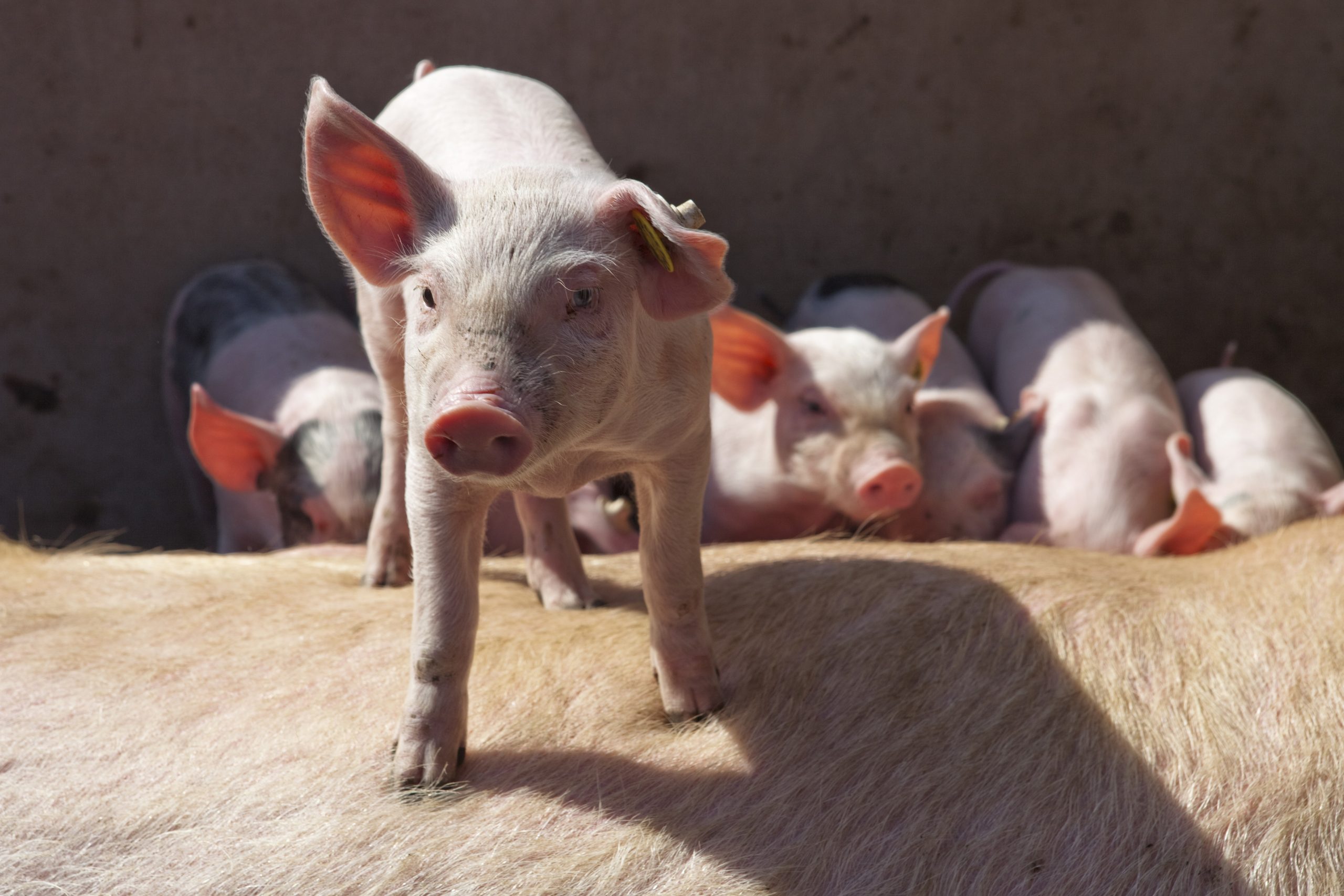Gut health damage and effect on profitability

Mycotoxins cause a variety of symptoms in pigs, ranging from feed refusal and lowered growth performance to altered reproductive capacity and immunity problems. However, the first target of mycotoxins, which can have one of the most influential effects on pigs, is gut health.
Many mycotoxins have cytotoxic and pro-oxidative properties, which can damage gut tissues and alter intestinal functions. This impact on gut health can subsequently affect the performance of pigs. This is because the gastrointestinal tract is the first organ to encounter mycotoxins when pigs are exposed to contaminated feed. Not only will the intestines serve as an entry route for mycotoxins into the rest of the body, but the direct effects of mycotoxins on the digestive system can have significant effects on pig health. Upon consumption of mycotoxins, there may be inflammation and necrosis of the gastrointestinal tract as well as changes to intestinal enterocyte functions and even gut-level immune responses (Alizadeh et al., 2015).
These effects can lead to poor performance and a loss in productivity. The trichothecene mycotoxins, such as deoxynivalenol (aka DON or vomitoxin) and T2 toxin, can cause some of the greatest damage to the intestinal tract. Research shows that exposure to DON can impair glucose transport systems across the gut wall in the jejunum, which may in turn alter nutrient absorption (Awad et al., 2004). Consumption of contaminated feed can also reduce villus height and surface area in the jejunum (Alizadeh et al., 2015; Figure 1). Additionally, the presence of DON may reduce the occurrence and rate of proliferating cells in the intestine. These cells are important in growing animals for the development of the gut and maximum nutrient uptake. Compromising their proliferation can negatively impact the animal throughout the entire growing period. Mycotoxin exposure can cause oxidative damage to many parts of the body, including intestinal epithelial cells. In piglets, lipid per oxidation in the jejunum has been documented (Van Le Thanh et al., 2015). Research also shows that mycotoxins such as DON can lower total antioxidant capacity (Wu et al., 2014). Externally, the increase in oxidative stress may manifest as an increase in feed conversion ratio (FCR) and a reduction in performance.
Figure 1 – Photomicrographs of piglet jejunum tissue after feeding either control (A) or 0.9 mg/kg deoxynivalenol (B) diets for 10 days. Villus height was significantly reduced (P< 0.001) and crypt depth significantly increased (P < 0.01) in pigs fed DON diets (adapted from Alizadeh et al.,2015).

An important, and often misdiagnosed consequence of mycotoxins is the negative effect they have on the intestinal microflora. An impaired balance of the intestinal flora can have many adverse effects on the health of the host. Several Fusarium mycotoxins are linked to altered microflora and an increase in gut pathogens. Waché et al. (2009) found that low-level doses of DON can result in altered gastrointestinal microflora. Consumption of fumonisin may also impact intestinal microbial populations, with research showing an increase in pathogenic E. coli colonisation of the small and large intestines during infection by this mycotoxin (Oswald et al., 2003). With concerns about antibiotic use continuing to rise, the management of mycotoxins could play an even greater role in gut health.
Figure 2 – Potential impact of mycotoxins on nursery pigs based on the average mycotoxin risk level of North American complete swine feeds from November 2016 to February 2017 (data collected from the Alltech 37+® mycotoxin analytical services laboratory).

The link between mycotoxins and profitability
When mycotoxins negatively impact pigs through damage to the intestinal tract, immune system or endocrine system, the result can be lowered growth and a subsequent decrease in profitability. Predictions generated Alltech, using a programme*, based on a summary of scientific literature, now provide a new understanding of how mycotoxins may influence swine producer profitability. Based on the average mycotoxin risk level from data for 2016 North American complete swine feeds (November 2016 through February 2017), nursery pigs may see a potential loss in daily gain of 34 g/day, a 1.3% increase in FCR and an overall loss in margin over feed (Figure 2). Further estimates for the effects of mycotoxins on grow-finish pigs can be calculated based on the same mycotoxin risk. In this case, grow-finish pigs may see an average estimated loss in daily gain of 53 g/day and a 1.7% increase in FCR (Figure 3). This loss in gain may equate to a total decrease of 4.8 kg (10.6 lbs) in carcass drag per pig. These effects on decreased gain and carcass weight can certainly impact producer profitability.
Figure 3 – Potential impact of mycotoxins on grow-finish pigs based on the average mycotoxin risk level of North American complete swine feeds from November 2016 to February 2017 (data collected from the Alltech 37+® mycotoxin analytical services laboratory).

Conclusions
Consumption of mycotoxins by pigs can have strong negative impacts on gastrointestinal health, including changes to cellular protein synthesis, decreased villus height and/or increased crypt depth, and increases in oxidative stress (Maresca, 2013; Alizadeh et al., 2015). The irritation and injury caused by these mycotoxins can hinder digestion, leading to increased nutrient availability for disease-causing pathogens. Analysis of the 2016 North American corn harvest showed 42% of the grains sampled presented a higher risk for nursery pigs and 12% presented a medium risk. Over 96% of samples were shown to contain multiple mycotoxins, especially those produced by Fusarium moulds. The high mycotoxin risk from the 2016 harvest is due to the poor climatic conditions that occurred in many regions during crop growth and harvest. The impact of these conditions may become even more apparent after storage. As a result, producers should be aware of both the current and future risks and how they may impact their pigs.
*Alltech PROTECT Calculator™
Author:
Dr Alexandra Weaver, Alltech® Mycotoxin Management











